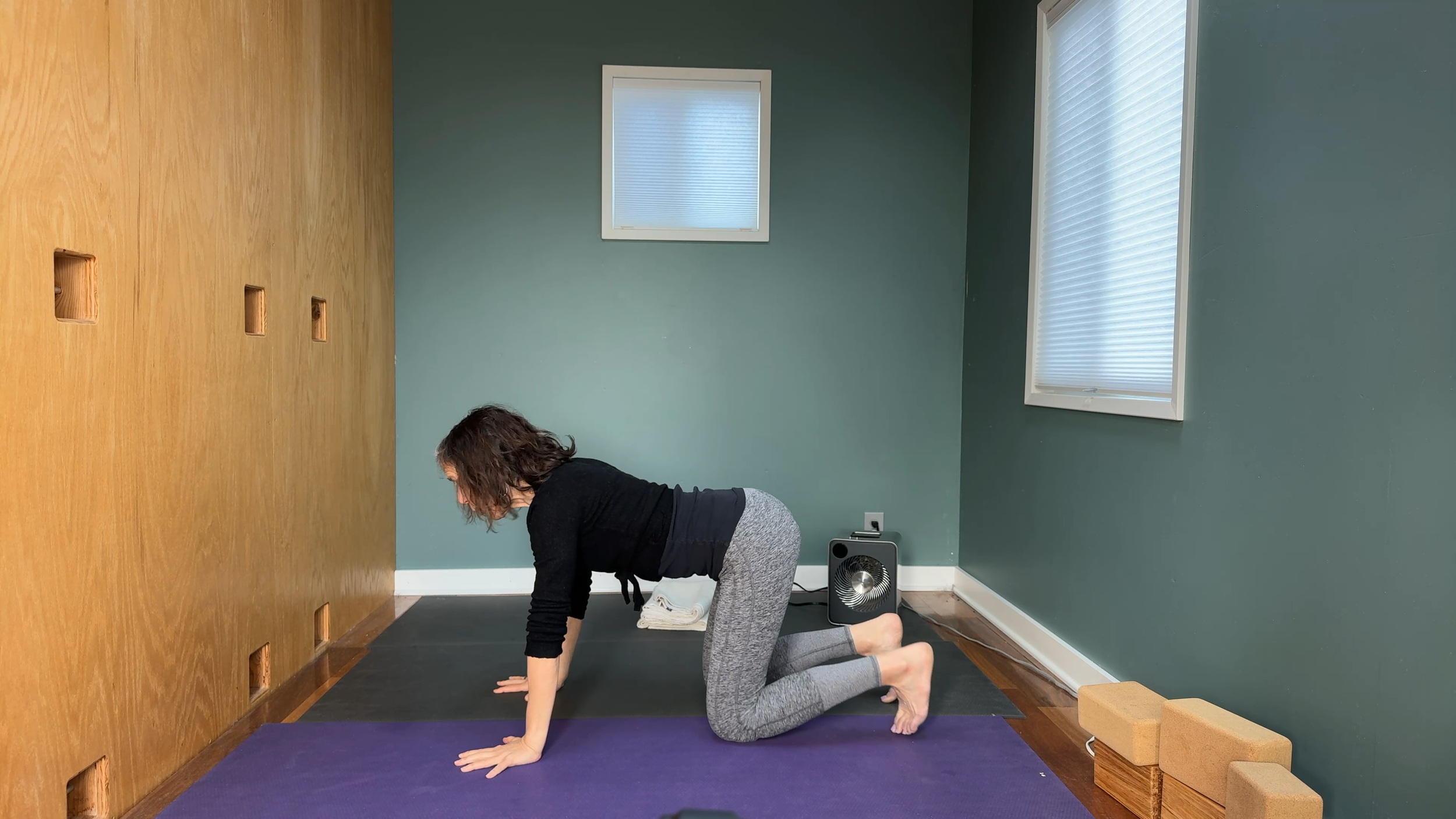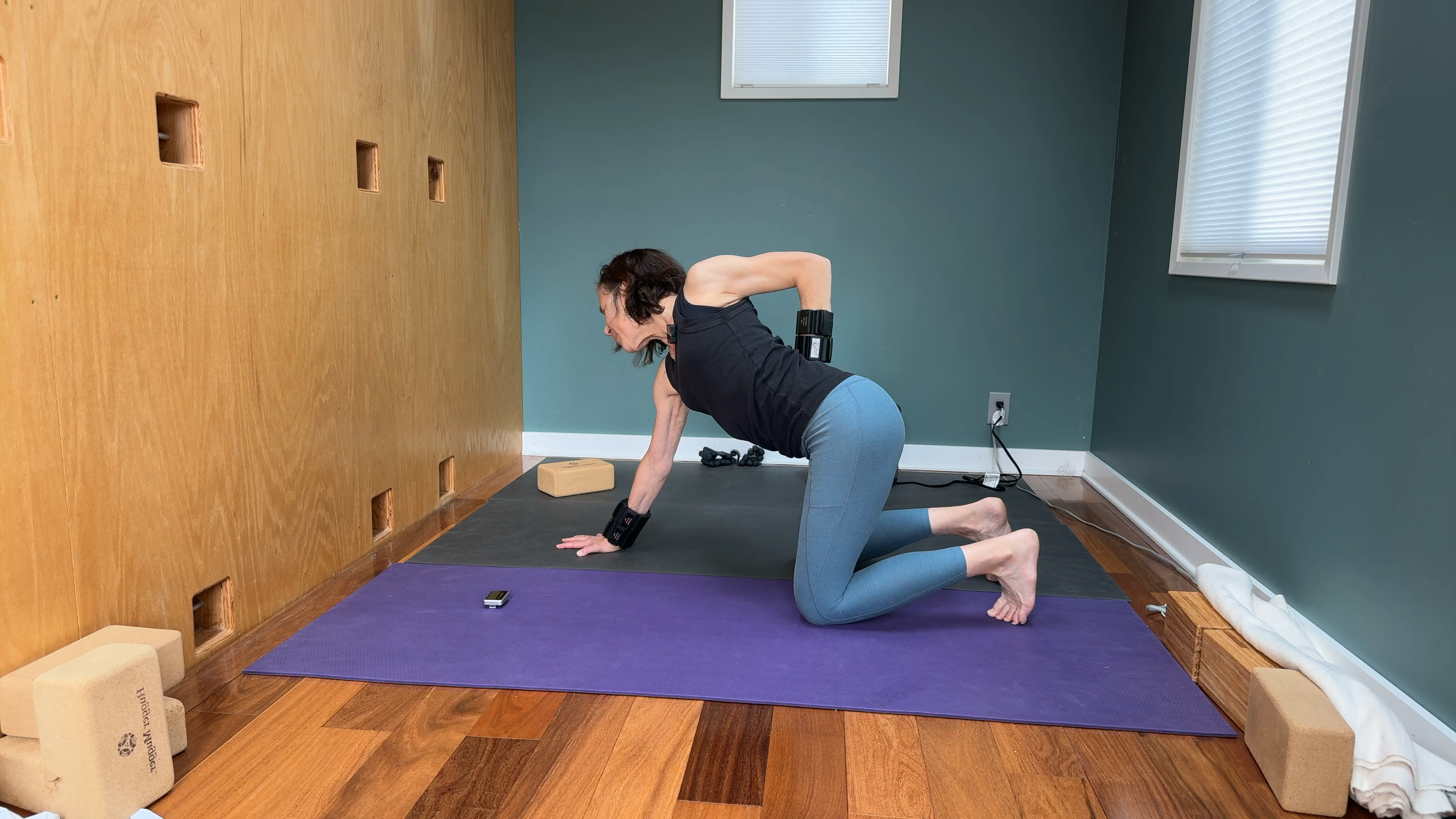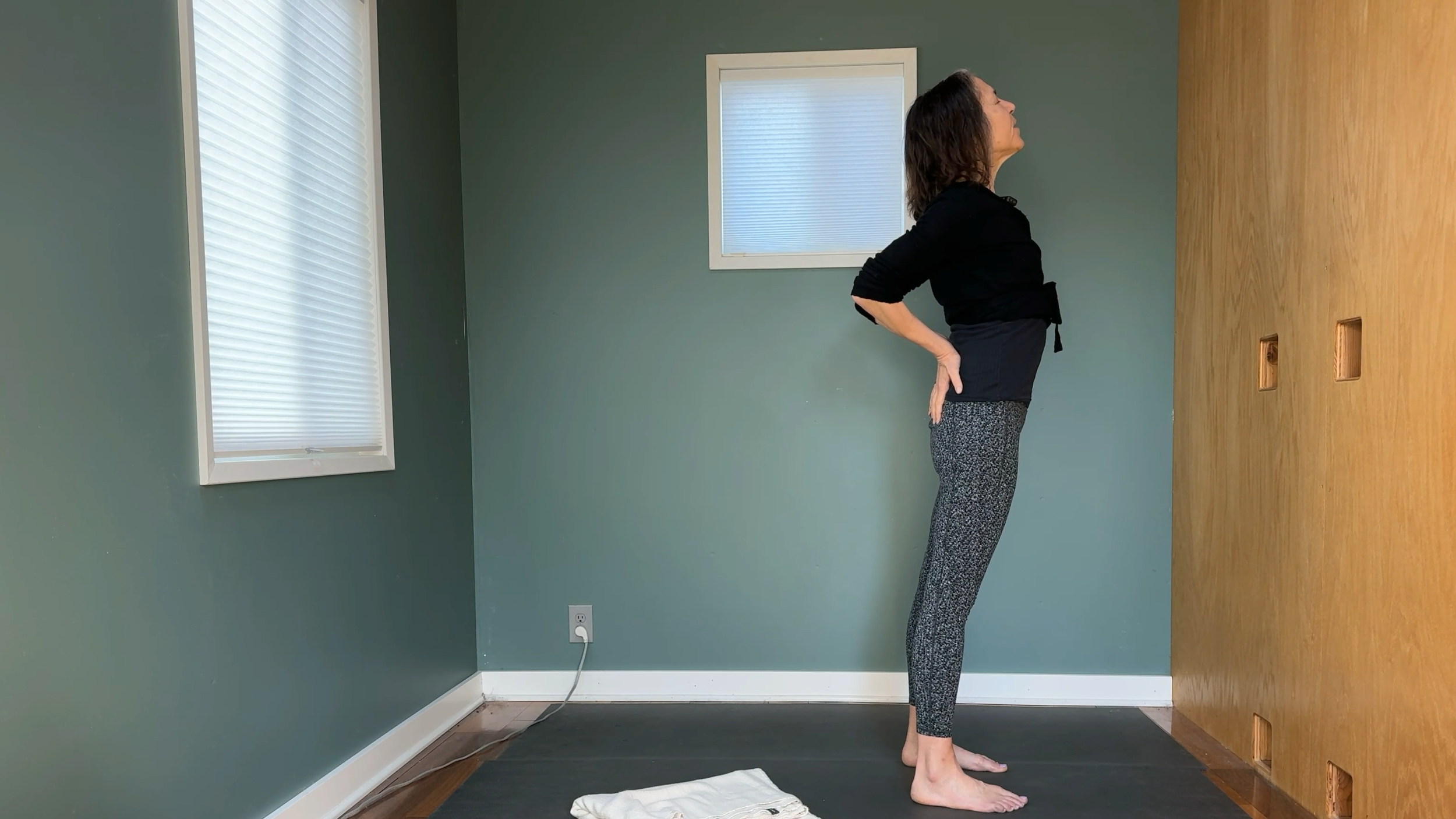Safe Exercises For Bone Density
Strong bones are ALWAYS important— but it becomes even more important for those of us who are over 50 years old. The good news is that a consistent exercise program that prioritizes bone health can REALLY make a difference.
Keeping your bones strong is super important, and something I have discovered with my students and clients is that we tend to take bone health, or bone strength, for granted until it becomes something to worry about. When our doctor mentions bone loss, osteopenia, or osteoporosis and that we might be at risk for a fracture, all of a sudden, strengthening our bones and doing safe, effective exercises becomes a priority.
If this is how you found your way here, welcome!
I am here to share everything I speak about with my students and clients about how to safely and effectively strengthen your bones through exercise, and in later articles, we will discuss how to exercise SAFELY if you have been diagnosed with osteoporosis or osteopenia.
Please don’t let fear stop you from exercising. Exercise done correctly can really help. But it is important to always check with your doctor or health professional if you are at risk for osteoporosis and to make sure you are choosing the RIGHT exercises.
One of the BIG themes of our classes and programs is exercise needs to be adaptable and adjustable to work for you.
At the Elevate Practice, our Strong Bones classes are ALL about building strength, flexibility, and mobility with safe, effective, evidence-based exercise. It is important to understand WHY we need to exercise for bone strength and HOW to exercise safely, no matter what level you are at!
What Is Bone Health
Bone health means keeping your bones strong.
We all lose bone density as we age, and the goal is to slow that down. Strong bones help you move easily, protect your organs, and keep you upright. As you age, your bones naturally lose some strength. This is especially true for women after menopause because their bodies produce less estrogen, a hormone that helps keep bones healthy.
When we think of bones we tend to think about how they are the structural foundation for your body, but they do much more than keep you upright.
Key Functions of Healthy Bones
Support and Movement: Bones form the framework of your body, enabling you to stand, walk, bend, and perform daily activities.
Protection: Yes, your bones protect you! Bones protect vital organs like your heart, lungs, and brain from injury.
Mineral Storage: Our bones act as a storage unit for essential minerals, such as calcium and phosphorus, which are crucial for overall health.
Hormone Regulation: Bones release hormones, like osteocalcin, which influence metabolism and help regulate blood sugar levels.
As you age, your bone health becomes increasingly important because bones naturally lose density over time. Factors such as hormonal changes, lack of physical activity, and inadequate nutrition can accelerate this process, weakening bones. But there is a TON of other factors, including genetics and medications. The people I work with focus on what we can control right now, which includes exercise, lifestyle changes (like quitting smoking and excessive alcohol use), nutrition, and how to decrease our risks of injury or fracture. We also need to work with all the other stuff that happens as we age, including arthritis and lack of mobility.
Key Terms to Know:
Bone Density: This is how thick and solid your bones are. Bones with high density are strong and less likely to break. You can think of it as comparing a solid brick to a sponge: a solid brick is dense and hard to break, while a sponge is weaker and easier to crush.
Osteopenia: This happens when your bones are weaker than normal but not weak enough to be considered osteoporosis. It’s like a warning sign that your bones need extra care to avoid becoming more fragile.
Osteoporosis: This is a condition where bones are very weak and brittle. Bones with osteoporosis break easily, even from small accidents like tripping or bumping into something. It often happens as people age and can make everyday activities riskier.
Why Exercise Helps Your Bones
Exercise is one of the best ways to keep your bones strong and healthy. To keep it simple— smart weight-bearing and strength training exercises stimulate new bone cells and slows down (at least a bit) the natural bone loss that happens with age.
Why You Should Exercise for Stronger Bones:
Exercise makes your bones stronger, so they’re less likely to break.
Exercise strengthens your muscles to support and protect your bones.
Exercise improves balance, so you’re less likely to fall.
Exercise improves mobility, so you are less stiff and can move with less pain!
Best Exercises for Strong Bones
Not all exercises help your bones the same way, as different types of activities place varying levels of stress on your bones and muscles. Weight-bearing exercises, such as walking or dancing (that one is for those of you that love to turn up the music!) directly stimulate bone growth by requiring your bones to support your body against gravity. Strength training exercises, like lifting weights or using resistance bands, enhance bone density through the pull of muscles on the bones. Meanwhile, balance and flexibility exercises may not build bone density as effectively, but they play a crucial role in preventing falls and improving mobility. Understanding these distinctions can help you create a well-rounded exercise routine that targets both bone strength and overall physical health.
Weight-Bearing Exercises
These are exercises where your body works against gravity. They help your bones stay strong by gently stressing them.
Examples:
Walking fast
Dancing
Climbing stairs
How They Help: These activities encourage your bones to grow stronger, just like muscles get stronger when you use them.
Strength Training
These exercises use weights or resistance to build muscle and bone strength.
Examples:
Lifting weights like dumbbells and kettlebells
Using wrist and ankle weights
Using resistance bands
Doing push-ups or squats
How They Help: They target the muscles and bones you use the most, helping them grow stronger over time.
Balance Exercises
Good balance helps prevent falls, which can lead to broken bones.
Examples:
Standing on one leg
Tai chi and certain yoga poses
Walking heel-to-toe in a straight line
How They Help: They improve your stability, making you less likely to lose your balance.
Flexibility and Mobility
These exercises keep your joints moving freely and reduce stiffness.
Examples:
Yoga
Gentle stretching
Mobility exercises
How They Help: They improve your posture and make everyday movements easier. Please note that both stretching and yoga need to be adapted for the individual and there are a TON of postures and poses I do not recommend.
Tips for Exercising Safely
Check with Your Doctor: Make sure the exercises are safe for you.
Start Slow: Begin with easy exercises and increase gradually.
Focus on Form: Doing exercises the right way helps you avoid injuries.
Stick to a Routine: Aim for at least 150 minutes of exercise each week.
How Our Online Classes Can Help
Our Elevate Practice classes and programs are designed for women over 50 who want stronger, healthier bones. It includes all the types of exercises we talked about—weight-bearing, strength training, balance, and flexibility—in easy-to-follow classes.
What You Get:
Expert Instruction: I am here to support you and offer useful exercises and alternatives.
Step-by-Step Progression: We offer ways to make exercises harder and more challenging over time!
Convenience: Join from your home at a time that works for you.
Options for Everyone: Quick workouts or longer sessions based on your needs.
Take the First Step to Stronger Bones
There are many ways to get started with an at-home exercise program to strengthen your bones. Even if it is a simple squat to a chair or a mobility routine to get started, a little bit of consistent, safe, and effective exercise can help.
My advice is to check with your doctor or bone specialist to get started. This is always the best way to start, then you can figure out what is a good starting point and how to stay consistent!
Even small steps can make a huge difference. For example, you can start with a simple core strengthening routine for beginners or a hip mobility exercise to help you get in and out of the car safely!
Ready to get started?
Access safe and effective strength and mobility exercise programs at the Elevate Practice with a free trial today!
FURTHER READING
Simple Stretches For Over Age 50
OTHER RESOURCES









